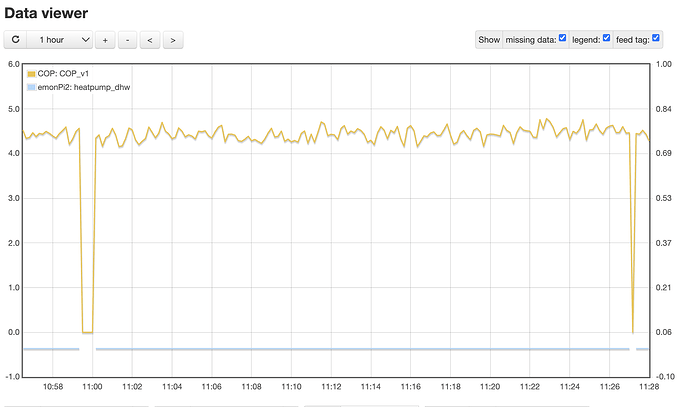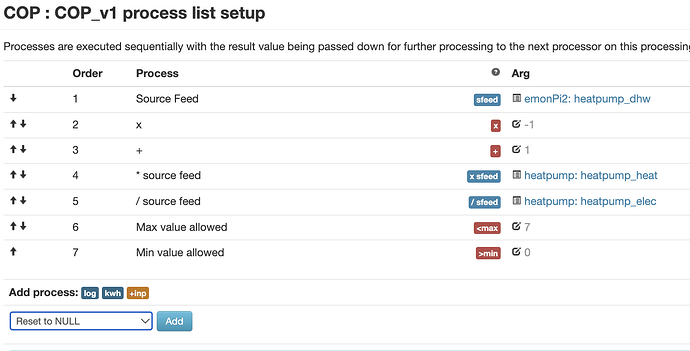I made a virtual feed for COP, but the missing data in the arguments(DHW indicator, heatpump_heat, etc) ends putting too many zero’s in the data, resulting in annoying notches.
In this data below, the killer missing data is in the DHW indicator feed(blue line). How can I clean this up in the feeds, to remove the notches? (the ‘remove nulls’ on graphing page doesn’t do anything for this.)
Does anything in here help you: The Virtual Feed - Post-processing data on the fly
The original values are clearly long gone. All I can suggest is you use the processing steps available, similar to those you use for input processing, to test for zero (or less than a suitably low value), and replace zero or whatever with something - a constant value possibly, maybe even a NULL which should result in a straight line though I’ve not checked - that is more acceptable.
Robert
I hadn’t seen that link before. Nice.
But it doesn’t address my problem of missing data. Basically we need to interpolate for the missing data. I don’t see any function here in the options that looks like it could achieve that. Let me know how you think it could be done. Here are the functions options in the feed:
and here is my hydronic COP function:
I’m not clear what ‘reset to NULL’ does.
thx
A NULL value is nothing - no item of data at all. it’s not the same as zero, which is a meaningful number (think 0 °C - it’s the same as 32 °F - compared to a broken thermometer ![]() ).
).
Why I suggested replacing the zero values (if they are indeed zero) with NULLs is I think the graphing algorithm will draw a straight line between the two good values. But this of course doesn’t get interpolated. You might also look at this:
Log to feed (Join): In addition to the standard log to feed process, this process links missing data points with a straight line between the newest value and the previous value. It is designed for use with total cumulative kWh meter reading inputs, producing a feed that can be used with the delta property when creating bar graphs. See: Guide: Daily kWh
You can’t use this retrospectively (because you can’t log a Virtual Feed), my understanding is you must have used it when logging the data initially - i.e. you avoid the problem in the first place.


